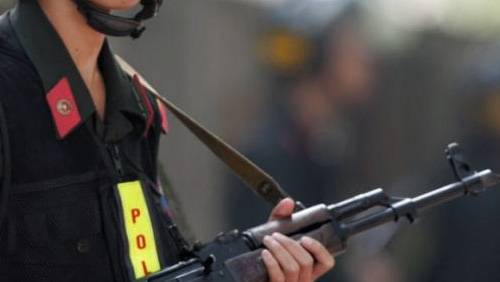

Peers had also served as CIA station chief in Taiwan in the early 1950s, when the Agency was backing the exiled KMT supremo, Chiang Kai-shek and his henchman Li Mi, Peers had helped design the pacification strategy for South Vietnam and was a good friend of Evan Parker, the CIA officer who headed ICEX (Intelligence Coordination and Exploitation), the command structure that oversaw Phoenix and other covert killing operations. Peers was a former CIA man whose ties to Agency operations in Southeast Asia dated back to World War II, when he supervised the OSS’s Detachment 101, the Burma campaign that often operated under the cover of Shan opium trafficking. But despite such maneuvers, high CIA and army brass were worried that the truth might trickle out, and so General William Peers of US Army Intelligence was given the task – so to speak – of straightening out the furniture. The Agency’s lawyer, John Greaney, successfully prevented Mitchell’s lawyers from lodging subpoenas against any Agency personnel. Mitchell claimed that the My Lai operation had been conducted under the supervision of the CIA.
#VIETNAM PHOTO POLICE CHIEF TRIAL#
But Khien apparently made his really big money from heroin sales to US soldiers.įor the CIA, the need to cover its involvement in the My Lai massacre became acute in August 1970, when Sergeant David Mitchell, a member of Task Force Barker, was put on trial for killing dozens of Vietnamese civilians at My Lai. Khien was notorious for being one of South Vietnam’s most corrupt chieftains, an officer who had his hand in everything from payroll fraud to prostitution. In addition, the NLF had seriously disrupted his business enterprises. For one thing, his family had been hit hard by the Tet offensive launched by the NLF earlier in the year. Ramsdell had acquired this estimate from Col. In the case of My Lai, Ramsdell told Task Force Barker’s intelligence officer, Captain Koutac, that “anyone in that area was considered a VC sympathizer because they couldn’t survive in that area unless they were sympathizers.” Ramsdell would then pass these lists on to the US Army units that were carrying out the killings. Operating under cover of the US Agency for International Development, Ramsdell headed the Phoenix program in Quang Nai province, where it was his task to prepare lists of suspected NLF (called by the Americans “Viet Cong”) leaders, organizers and sympathizers. The My Lai operation was principally developed by two men, the CIA’s Paul Ramsdell and a Colonel Khien, the Quang Nai province chief.

The ammunition was faulty intelligence provided by secret agents harboring grudges – in violation of the agreement that Census Grievance intelligence would not be provided to the police. Phoenix made it as easy to shoot a Vietnamese child as it was to shoot a sparrow in a tree. Under the aegis of neutralizing the infrastructure, old men, women and children became the enemy. The My Lai massacre was a result of Phoenix, the ‘jerry-built’ counter-terror program that provided an outlet for the repressed fears and anger of the psyched-up men of Task Force Barker. As Douglas Valentine writes in his brilliant book, The Phoenix Program, The cover-up was instead to disguise the fact that My Lai was part of the CIA killing program called Operation Phoenix. The problem wasn’t the massacre itself: polls right after the event showed 65 percent of Americans approved of the US action. The cover-up of this operation began almost from the start. They were there at least two hours, at 500 feet, 1000 feet and 1500 feet.” These guys were flying overhead from 7:30 in the morning, when the unit first landed and began to move into those hamlets. All three tiers in the chain of command were literally flying overhead while it was going on. Over the next eight hours US soldiers methodically killed 504 men, women and children.Īs the late Ron Ridenhour, who first exposed the massacre, said years later to one of the present authors, “Above My Lai were helicopters filled with the entire command staff of the brigade, division and task force.

Two squads cordoned off the village and one, led by Lieutenant William Calley, moved in and, accompanied by US Army Intelligence officers, began to slaughter all the inhabitants. At 7:30 a.m., on March 16, 1968, Task Force Barker descended on the small hamlet of My Lai in the Quang Nai province of South Vietnam.


 0 kommentar(er)
0 kommentar(er)
